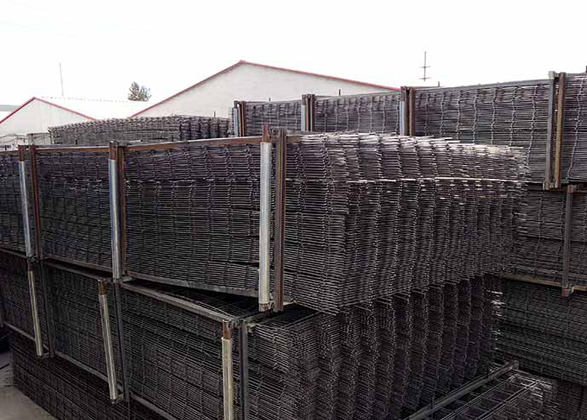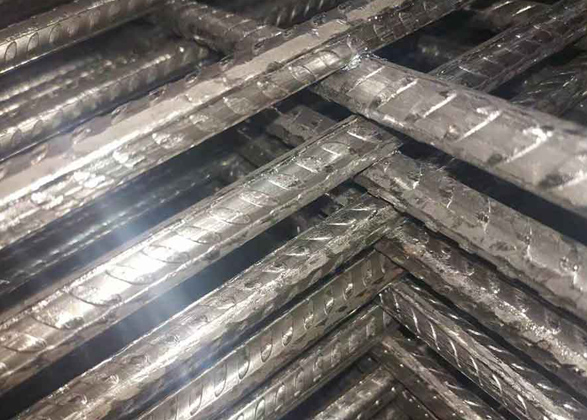Reinforcement mesh, also known as reinforcing steel or rebar mesh, plays a crucial role in concrete construction. It enhances the structural integrity, tensile strength, and durability of concrete elements. There are several types of reinforcement mesh, each designed to meet specific construction needs. This guide provides an overview of the different types of reinforcement mesh and their applications.
1. Welded Wire Mesh
Welded wire mesh is made by welding steel wires at intersections to form a grid pattern. This type of mesh is commonly used in concrete slabs, walls, and pavements due to its uniformity and strength. It is available in various sizes and gauges, allowing for flexibility in different construction projects.
2. Expanded Metal Mesh
Expanded metal mesh is created by cutting and stretching a sheet of metal to form a diamond-shaped pattern. This type of mesh provides excellent tensile strength and is often used in reinforcing concrete surfaces and structures that require additional support. Its open design also allows for better bonding with concrete.
3. Square Mesh
Square mesh, also known as welded square mesh, consists of equally spaced longitudinal and transverse wires welded at intersections to form square openings. This type of mesh is commonly used in floor slabs, roadways, and precast concrete elements. The uniform spacing of the wires ensures even distribution of loads and enhances the structural integrity of the concrete.

Square Reinforcement Mesh
4. Rectangular Mesh
Rectangular mesh is similar to square mesh but with rectangular openings. It is typically used in applications where different load distribution is required, such as in walls and beams. The rectangular pattern provides flexibility in reinforcing concrete elements with varying dimensions.

Rectangular Reinforcement Steel Mesh
5. Trench Mesh
Trench mesh is specifically designed for reinforcing concrete footings and trenches. It usually features longitudinal wires with larger diameters to handle the increased loads typical in footing applications. Trench mesh ensures the stability and durability of foundations and other ground-level structures.
6. Ribbed Mesh
Ribbed mesh, also known as deformed mesh, features ribs or deformations on the surface of the wires. These deformations improve the bonding between the mesh and the concrete, providing enhanced tensile strength and load-bearing capacity. Ribbed mesh is widely used in reinforced concrete slabs, beams, and columns.
7. Galvanized Mesh
Galvanized mesh is made from steel wires coated with zinc to prevent rust and corrosion. This type of mesh is ideal for applications exposed to moisture or harsh environmental conditions, such as marine structures, retaining walls, and exterior concrete elements. The galvanized coating ensures the longevity and durability of the reinforcement.
8. Stainless Steel Mesh
Stainless steel mesh is made from high-grade stainless steel wires, offering excellent resistance to corrosion and chemical damage. It is commonly used in environments where exposure to corrosive elements is a concern, such as in chemical plants, wastewater treatment facilities, and coastal constructions. Stainless steel mesh provides superior durability and strength.
Questions and Answers
Q: What is the primary purpose of reinforcement mesh in concrete construction?
A: The primary purpose of reinforcement mesh is to enhance the tensile strength, durability, and structural integrity of concrete elements. It helps in distributing loads evenly and prevents cracking and deformation of the concrete.
Q: How do I choose the right type of reinforcement mesh for my project?
A: Choosing the right type of reinforcement mesh depends on the specific requirements of your project, such as load-bearing capacity, environmental conditions, and the dimensions of the concrete elements. Consider factors like tensile strength, corrosion resistance, and bonding capabilities when selecting the mesh.
Q: Can reinforcement mesh be used in all types of concrete structures?
A: Yes, reinforcement mesh can be used in various concrete structures, including slabs, walls, beams, columns, footings, and pavements. The type of mesh selected should be appropriate for the specific application to ensure optimal performance and durability.
Q: What are the benefits of using galvanized mesh in construction?
A: Galvanized mesh offers enhanced resistance to rust and corrosion, making it ideal for structures exposed to moisture and harsh environmental conditions. It ensures the longevity and durability of the reinforcement, reducing maintenance costs and extending the life of the concrete elements.
Q: Is stainless steel mesh more expensive than other types of reinforcement mesh?
A: Yes, stainless steel mesh is generally more expensive than other types of reinforcement mesh due to its superior corrosion resistance and strength. However, its durability and low maintenance requirements can offset the initial cost in the long run, especially in corrosive environments.
In conclusion, choosing the right type of reinforcement mesh is crucial for the success of your construction project. By understanding the different types of reinforcement mesh and their specific applications, you can ensure optimal performance, durability, and structural integrity of your concrete elements.








